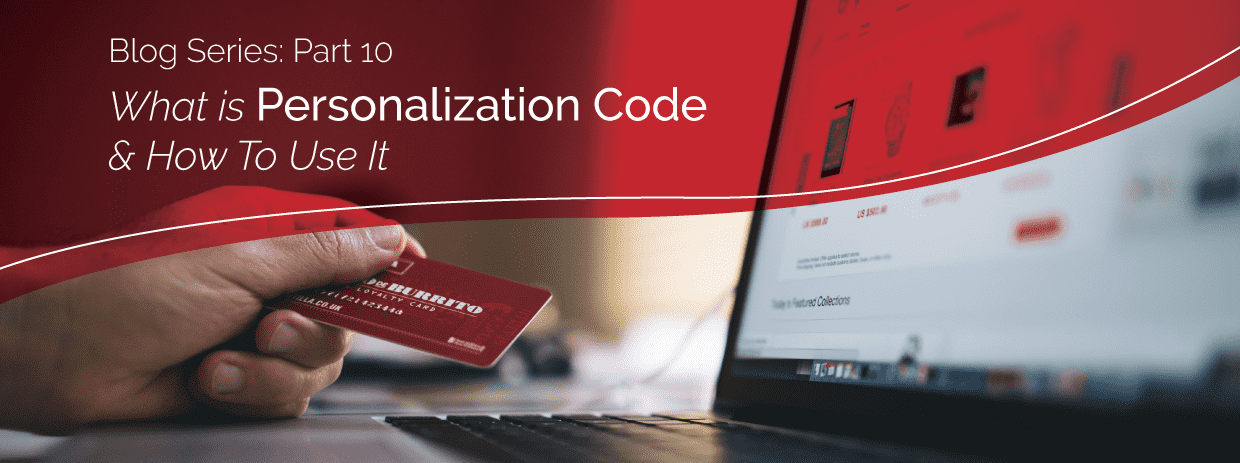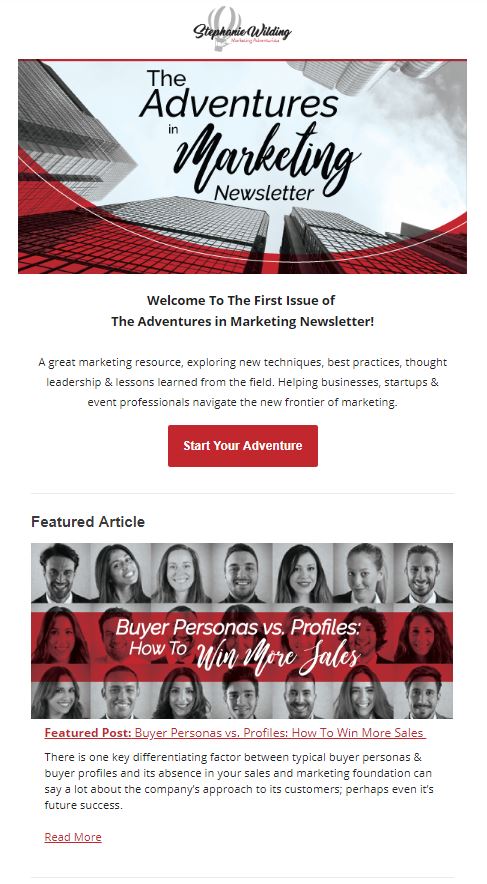What is Personalization Code & How To Use It

Personalization Code & Its Role In Today’s Business Environment
We live in the most user-centric era yet. Far beyond the belief that “the customer is always right”, companies now strive to cater the entire purchase experience (or series of experiences) to the personal needs and interests of each individual; ushering in what has been coined as ‘the engagement economy’ by the marketing automation industry leader, Marketo.
This terminology refers to the shift in customers expectations for relevant, meaningful and personalized brand experiences, when they want them, and on their terms. As a marketing professional, let me tell you this is a tall order – however endeavoring to achieve it is no longer an option. No longer are your direct competitors, your only concern – in this environment of engagement the brand experiences that you are providing your clients and prospects, are being measured against the experience every other brand is delivering.
Going back to “grassroots” or believing there is no need to adapt and evolve will only lead to your customers and prospects viewing the experiences your brand provides as being disconnected and irrelevant. Leaving them feeling that your company doesn’t understand them or their needs.
Through this ten-part series on marketing automation for small businesses, we have explored ways that you can leverage the technology and the functionalities it provides as well as how initiatives that utilize these functionalities can be incorporated and implemented into your marketing strategies. Each post has explored a different aspect of your business and how it can benefit from this technology; leveraging it to even the playing field and allow you to compete with larger organizations. Personalization code is another function that will enable you to provide the experiences with your brand, that your customers and prospects are expecting, on a scalable level.
Experiencing Personalized Website Visits
Personalization code, allows you to take your user journey to next level, by customizing what each user sees based on behaviors or interests they have expressed on your website in the past. Think of your favorite website, it could be an online retailer, a social networking site, a live streaming site, or maybe a B2B solutions site with a killer resource section.
Have you noticed that the more you interact with the content displayed on the site, the more your visits have been tailored to your interests?
This is because they are employing various methods available to better understand you. It could be as simple as asking you to rate certain products or options on their site. Or maybe having you fill out interest-based questions broken out over a series of visits. Perhaps they are tracking the content you are interacting with and using this to gauge your interests, likes and dislikes as they adjust over time – maybe even to predict future content you will be interested in.
Think all of these options sound creepy, and you wouldn’t fall victim to such ploys? Think again, because the practices I just described are actively in use on such sites as Facebook, Amazon, and Netflix (just to name a few). At first glance, these practices can seem intrusive but there are two sides to this coin, for example, what do you think your experience would be when using Netflix if your recommended lists were absent? As of March 2016, there were 4,335 movie titles and 1,197 TV shows available on Netflix, imagine having to sift and sort through all of that content manually? What about the helpful notifications we receive when a new movie or TV show that falls within our interests has been added? Without tracking our viewing habits, likes and interests they would not be able to alert us that the movie we had been dying to see in theatre but missed out on was now available to stream from the comfort of our couch.
The same can be said for Facebook, with “510 comments, 2,93,000 statuses and 1,36,000 photos posted every 60 seconds.” our timeline or news feed would be bombarded with content, regardless of its quality, our interests or current engagement levels. Although it has been suggested that the engagement algorithm Facebook introduced was to pressure businesses into spending advertising dollars by limiting their organic reach, it would be short-sighted to say this hasn’t had a profound impact on the experience Facebook users are currently enjoying. This stems from the fact that, the more you engage with a business or “friends” content the more Facebook will serve you related content.
You may be thinking, this is great, but how is it relevant to my business?
Well, let’s take a look at a few ways personalization codes can be implemented in your business and marketing strategies.
Content Marketing
If you are in the B2B environment chances are high that you employ a lead-based sales approach which will incorporate a nurturing aspect of some sort; working to move your prospects through the stages of your purchasing process or sales funnel. Content marketing strategies have become a popular method for nurturing engagement in leads, by providing them useful content that is informative while including what is considered a soft sell for your products or services. However, as you build your content library it can be hard for prospects to find the next piece that will be of greatest interest to them; enter your personalization code. This will allow you to categorize your content based on the area of interest it serves most, as well as the areas it is closely related to and when a prospect who has interacted with content from certain areas of interest is completing one piece, your website will suggest or display other content that is directly related to their expressed interest with the goal of encouraging them to continue engaging with your website. This can be achieved by suggesting numerous content pieces that will nurture your leads, while informing/educating them along the way, not to mention creating multiple reasons for your sales representatives or account managers to reach out. Content types that could be displayed through personalization codes are:
- Suggested blog posts or articles
- eBooks or white papers
- Live or on-demand webinars
- Case studies or testimonials from similar clients who have converted
- Document templates
- Live demos
- Upcoming events or conferences
Standard Content
Not specifically using a content marketing approach? That’s fine, if you do have testimonials and case studies broken out by type of purchaser (or that apply to specific buyer personas), or certain products/service or packages that speak specifically to one of your target audiences, you could help generate interest from them and hopefully accelerate them through your purchase cycle by displaying the information that will directly appeal the most to them and will be of greatest interest. This can be achieved through personalization code as it allows you to completely customize the entire web page(s) the user visits based on the target segmentation you set up.
Online Retailer
Why not take a page out of Amazon’s book and use personalization code to drive increased revenue through the sale of related products, upselling products, and by displaying the products specific audience segmentations are most likely to buy.
Related products: by using personalization code you can categorize the products you sell online and the products within related categories that are normally sold together. For example, if someone is looking to purchase a digital camera and is viewing a specific model’s detail page, there could be a section of the page, that highlights products that are typically purchased with the camera, like the memory card, tripod, external flash, cleaning kit, protective travel case etc. These can be a mix of the products from the same supplier that manufactures the camera and are specifically built for that model, as well as top-rated accessories from other companies that can be used conjunction with the camera. This simplifies the purchasing experience for your buyer, by limiting the need to hunt for the related products, and discouraging purchases from competitors (online and in-store), through saving them money on shipping fees, you can encourage them to spend more on your site.
Upselling: personalization code can also be used to upsell products on your site if a user within a certain audience segment is viewing a product below their typical spending point. For example, if someone within your audience segment who fits the demographics of a high-end purchaser is viewing a low-end camera model’s detail page, the same field used to recommend related products could instead display the top 5 camera models or the next 5 highest priced camera models with the statement “people who viewed this camera, purchased one these:” with the goal of turning a $500 sale into a $1200 sale. If you really wanted to maximize your revenue you could combine these two approaches by then displaying the related products once the user is viewing the $1200 camera; encouraging them to then purchase the accessories that belong to the more expensive item in addition to the upsell.
Customized experience: with online retail giants such as Amazon, the competition for prospective buyers can be fierce and driving them to your website is only a small part of the battle. Once you have their focus, you need to engage them quickly before their short attention spans point them in another direction. Personalization code can also help you achieve this by completely customizing the pages they see including the products that are featured. If you are really into tech gear and you land on a website with the latest PC’s, and other tech gadgets up front and center you typically will begin to engage with the products that are displayed to you and thus begin moving through the conversion process where recommended related products or high-end products can be displayed along the way.
Buyers can become overwhelmed with all of the options available or disengaged by products that don’t appeal to them; personalization code allows you to customize their experience with your brand by providing them with a personalized user journey. By providing these experiences, your website becomes the personal shopper they never knew they needed, but now, can no longer live without.
Haven’t read the rest of this blog series? No better place to start than the beginning! How To Master Marketing Automation For Your Business

